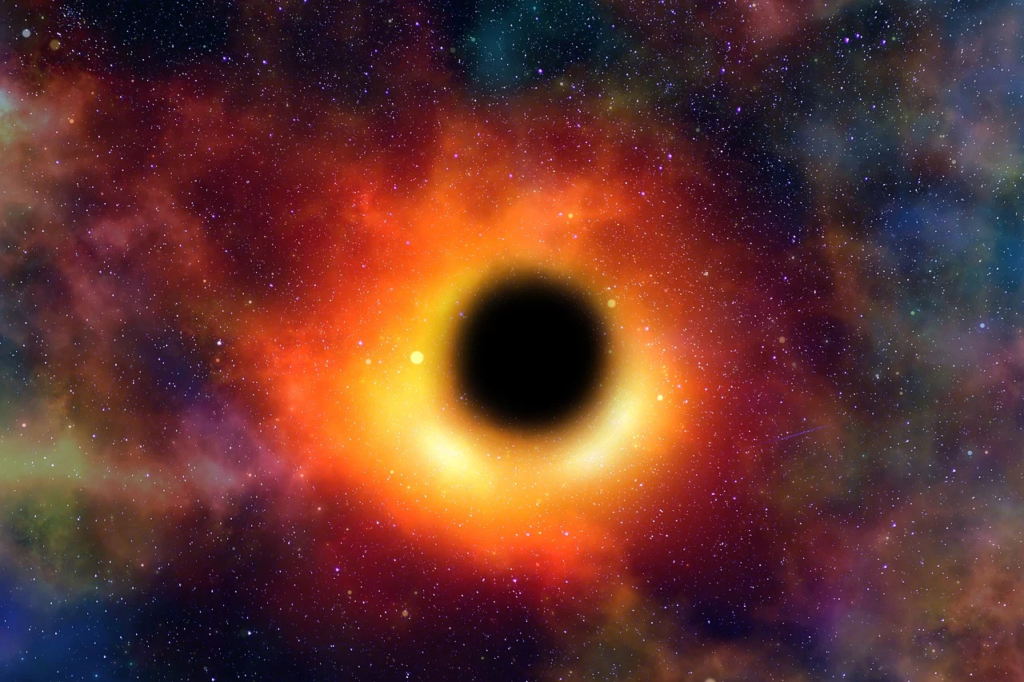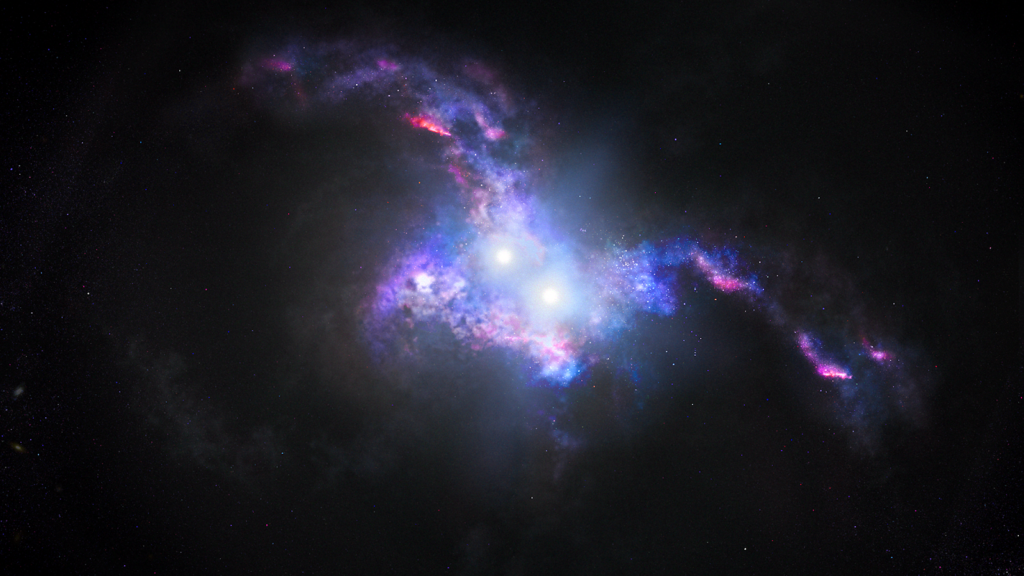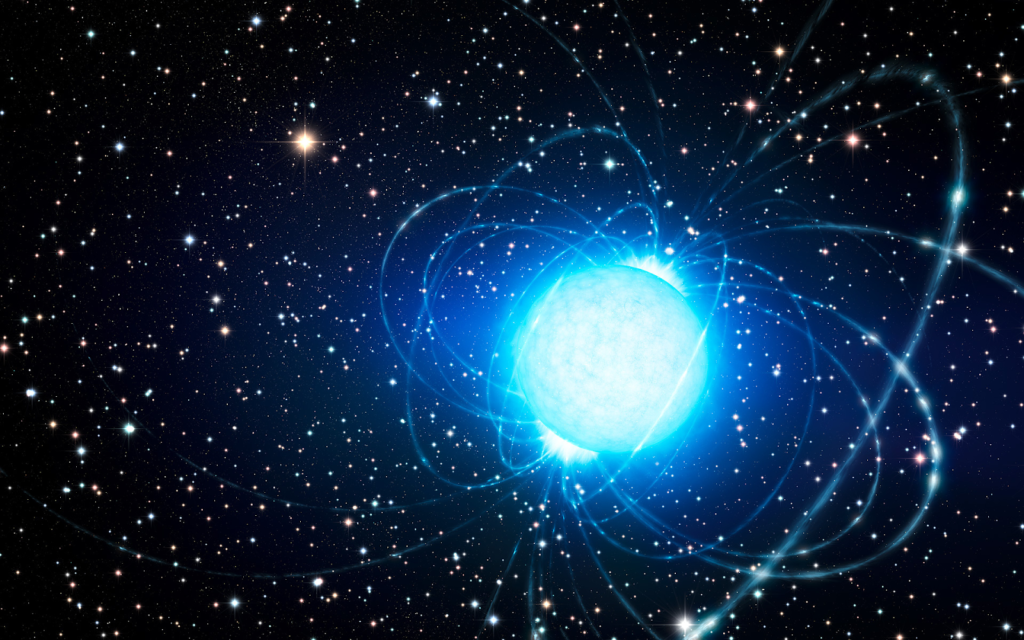🕳️ Black Holes: Cosmic Pits that Swallow Light
One of the most mysterious and intriguing structures in the universe, black holes form when a massive star collapses under its gravity at the end of its life. The resulting structure becomes so dense and compact that not even light can escape. Once you cross the “event horizon” — the boundary of the black hole — nothing can return. These objects bend the fabric of space-time and showcase the most extreme examples of gravitational forces. Thanks to Einstein’s theory of general relativity, we’ve begun to understand these phenomena, but many of their mysteries remain unsolved.
Black holes are not only places where matter disappears, but also cosmic laboratories that help us understand the deep workings of the universe. When gravitational waves were first detected in 2015, resulting from the collision of two black holes, our understanding of time and space was revolutionized. In 2019, the Event Horizon Telescope captured the first-ever image of a black hole’s shadow. This photo was not only a scientific achievement but also a triumph in the quest to “see the invisible.” Black holes continue to push the boundaries of scientific inquiry, prompting questions like: Does information truly vanish? How does time work inside them? Perhaps the answers to these questions are even more fascinating than the universe itself.

🌟 Quasars: Cosmic Flashlights from the Universe
Imagine a beam of extraordinary brightness, shining from the farthest corners of the universe. This isn’t a star, nor a galaxy — it’s a quasar. In fact, quasars are energetic emissions produced by a supermassive black hole at the center of a galaxy, surrounded by a high-speed rotating disk of gas and dust. As matter is drawn into the black hole, it spins and compresses at such high speeds that friction generates energy equivalent to millions, even billions, of Suns. We can observe this incredible light from billions of light-years away.
Quasars are not only fascinating for their immense energy but also for their ability to act like time machines. When we observe a quasar, we’re actually looking at how it appeared billions of years ago. This provides an invaluable opportunity to study galaxy formation in the early universe and the evolution of black holes. Some quasars also serve as the farthest observable objects in the universe, playing a key role in our understanding of cosmic distance and expansion. They are not just light sources; they’re glowing windows into the history of the cosmos.

🧲 Magnetars: The Cosmic Dynamo of Magnetism
Stars die with a bang. However, some leave behind a force so powerful it still shakes the universe long after their death: the magnetar. A magnetar is a type of neutron star that has undergone a supernova explosion, but its magnetic field becomes extraordinarily intense. The densities are so immense that just a spoonful of magnetar material would weigh about a billion tons on Earth. But what’s truly fascinating — and frightening — is its magnetic field: magnetars have magnetic fields a quadrillion times stronger than Earth’s. This immense field is powerful enough to distort the structure of atoms!
Magnetars occasionally undergo “starquakes,” releasing gamma-ray bursts into space. These bursts are so intense that they can cause changes in Earth’s upper atmosphere even from thousands of light-years away. For example, in 2004, a gamma-ray burst from the magnetar SGR 1806-20 was powerful enough to affect satellites orbiting Earth. Today, scientists study magnetars not just as astronomical curiosities but also as tools for understanding how matter behaves at quantum extremes. They are both cosmic laboratories and natural wonders that reveal the universe’s most extreme limits.

🎥 This Week in Our Arts Corner: Dark (2017-2020)
If you’re looking for a show that delves into the complex relationships between time, space, and humanity, Dark is the perfect pick. Set in a small German town where children mysteriously vanish, this series pulls the viewer through four different time periods, exploring concepts of parallel universes and time travel. As the characters uncover family secrets, deal with loss, and face the mysterious workings of the universe, each episode draws you in deeper. For fans of both science fiction and philosophical journeys, Dark is a must-watch. With its intricate plot structure and rich character development, Dark offers an immersive experience that’s as intellectually engaging as it is thrilling.


